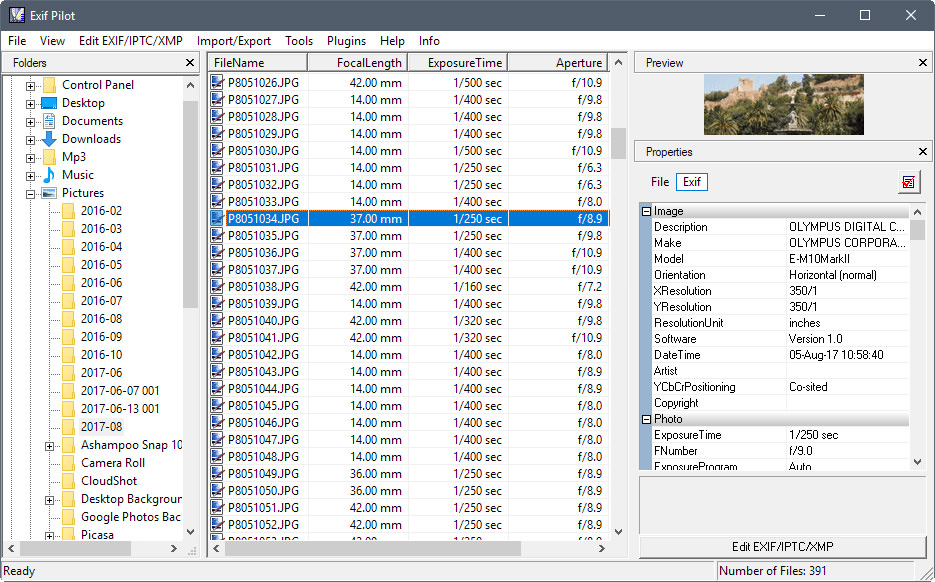

Just make sure to give credit to the original photographer, of course. This way, you could discover the photo’s original settings to try to recreate the style yourself. If you see and like a particular photo while surfing the web or viewing a photographer’s digital portfolios, you might be able to request or access that image’s EXIF data. EXIFs store metadata - or data about your photos’ image data - so that you can group them based on certain criteria, like GPS location, time and date, or even specific camera settings. The EXIF file format makes storing and retrieving your photos as easy as possible. They’re useful in a variety of scenarios, including: Whether you’re a professional or a hobbyist, EXIFs are great documentation tools for photographers. Like TIFFs, EXIFs store image metadata, but their purpose is related to storage and cataloging ease instead of the image editing and manipulation capabilities of TIFFs. Almost 30 years later, today’s EXIFs hold a range of image or video metadata - including photo and audio data.ĮXIFs borrow much of their file structure from TIFF files. Over the following decade, more versions were released with additional data features. Created by the Japan Electronic Industries Development Association (JEIDA), this file format initially stored basic metadata (that is, data about other data - in this case, image data) such as date and time information, plus a small thumbnail to view the image in a folder structure.

You might also encounter audio data like decibel range, bitrate, or mono/stereo information for any video footage in an EXIF file. But some people prefer to remove the EXIF file before loading their personal images to a website to protect any personal information, like their GPS location. If you see a photo on a website that you want to find out more about, you can often access EXIF data if the website is using the original photograph file.
#Using r to edit exif metadata how to
It’s useful for photographers to learn how to read and understand the EXIF format to make cataloging your images easier. This makes it easier to filter photos on your storage device by particular image characteristics. An EXIF file holds all the information about the image itself - such as the exposure level, where you took the photo, and any settings you used. Almost all digital cameras create these data files each time you snap a new picture. JDeli allows you to extract Heic Image metadata in two lines of Java code.EXIF (Exchangeable Image File Format) files store important data about photographs.

ExifTool is an Open Source Perl library for reading Exif data from multiple file types.exiv2 is a an Open Source C++ library for reading Exif data.There is a really good tutorial for this on Youtube. While this is written in C, there are a number of wrappers for other languages including Python. libheif is an Open Source library for accessing image data.Here is a selection of 5 Open Source or Commercial tools which you may find useful as a starting point. Not all tools support all image formats (especially Heic). There is a good selection of free and commercial tools for reading EXIF data from Image files, depending on the language you are writing your code in. So we finish our series of articles with some suggestions to try. Sometimes, you need to programmatically access the data. In our previous article we looked at some Viewers which could display Exif data for you. How to read EXIF metadata from Image files He has an MA in Medieval History and a passion for reading.
#Using r to edit exif metadata pdf
Mark Stephens Mark has been working with Java and PDF since 1999 and is a big NetBeans fan.


 0 kommentar(er)
0 kommentar(er)
